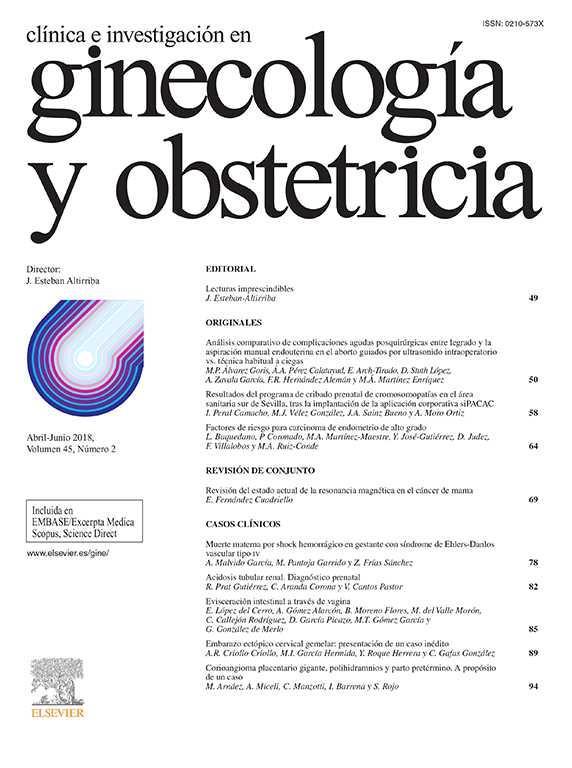Se estudian 152.470 partos con feto único habido sen la maternidad La Fe entre el 1 de enero de 1980 y el 31 de diciembre de 1999. Al clasificarlos según la paridad de la mujer, se observó que 77.877 (51,1%) eran nulíparas y 74.593 (48,8%) multíparas.
Se comparan los partos habidos en este centro entre las fechas indicadas, observando una disminución progresiva que alcanza significación entre los valore sextremos.
Esta disminución no se produce de forma uniforme, sino con un aumento relativo de las nulíparas en detrimento de las multíparas, siendo en la actualidad de 51,1 y 48,8%, respectivamente, frente al 46,6 y 56,4%, que eran los valores al inicio del estudio. Las multíparas se clasifican con arreglo a la paridad observando un aumento de las primíparas y una disminución del resto con el paso del tiempo. Se observauna disminución del número de partos por mujer, que ha pasado de 2,0 a 1,5, existiendo entre ambos valores diferencias estadísticamente significativas. Al clasificar las nulíparas según la edad en el momento del parto se observó en la actualidad una tendencia a mayores edades, sin que alcanzara significación estadística; esto mismo ocurría al considerar a todas las mujeres, por lo que recurrimos a hacerlo por paridades.Podemos afirmar que en nuestro medio, la edad de la mujer en el momento del parto ha aumentado con el tiempo, de forma que las nulíparas y las primíparas muestran valores que alcanzan significación estadística respecto a lo que ocurría al principio del estudio, no alcanzándose en las secundíparas, tercíparas y cuartíparas.
We studied 152,470 single foetus deliveries, attended in the maternity hospital "La Fe" between 1-01-1980 and 31-12-99. When classifying the mothers parity, we observed that 51.1% (77,877) were nulliparous and 48.8% were multiparous.
Between these dates we observed a progressive decrease in the higher value, which was statistically significant.
This diminution did not occur uniformly, there was a relative increase of nulliparous, to the detriment of the multiparous, these being 51.1% and 48.8% respectively, opposed to 46.6% and 56.4% at the beginning of the study. We classified the multiparous depending on parity, and observed an increase of primiparous and a decrease of multiparous during this time.
There was a decrease in the mothers number of deliveries from 2.0 to 1.5, which is a statistically significant difference.
On classifying the nulliparous using the mothers age at date of delivery we found that there was a tendency towards an older age, without it being statistically significant; the same thing occurred when we looked at the whole group, and for this reason we classified them according to parity. We can confirm that in our area, the average age of a woman at date of delivery has increased over this time, in such a way that the nulliparous and primiparous reach statistically significant levels with respect to what happened at the beginning of the study; the multiparous do not reach these levels.






